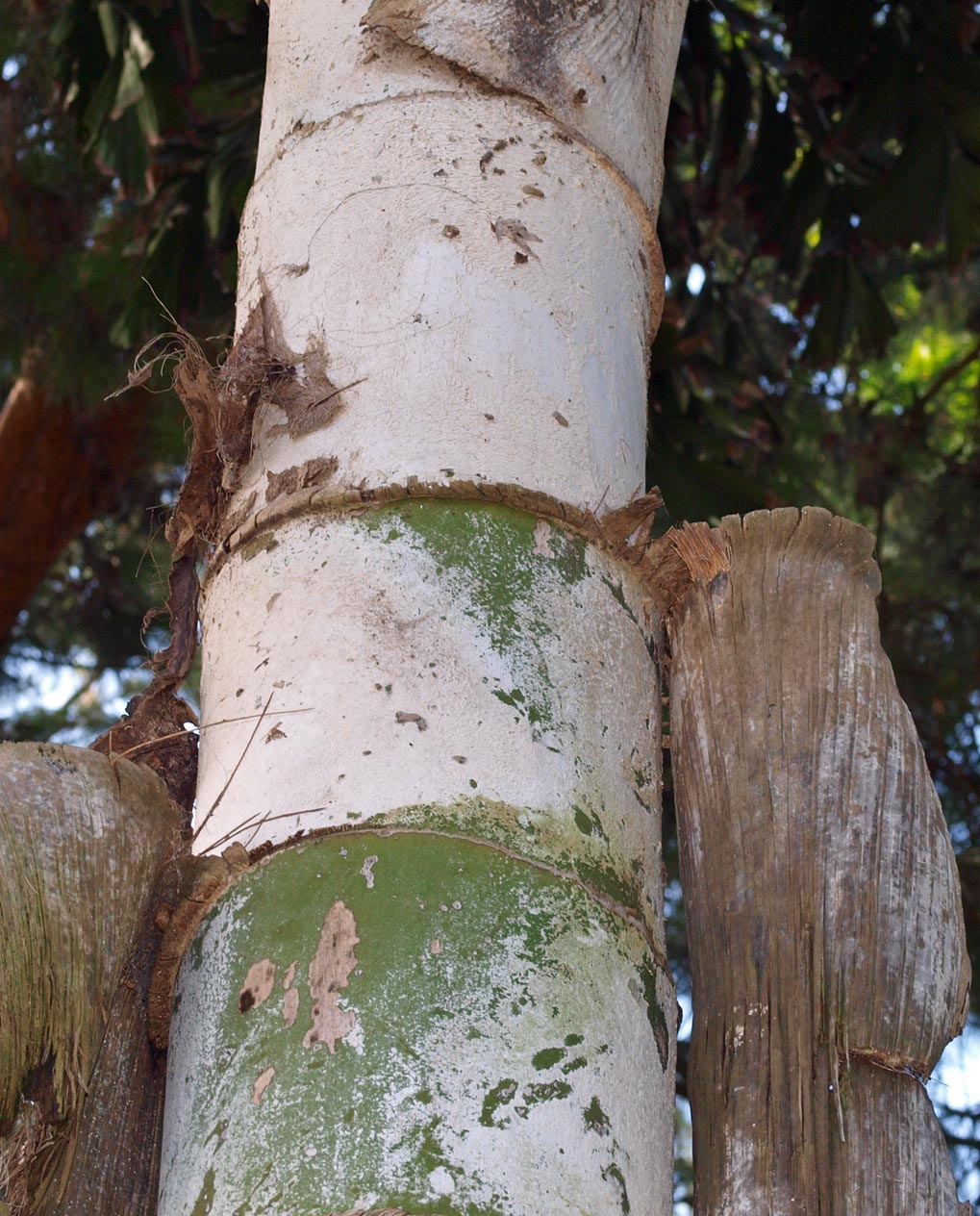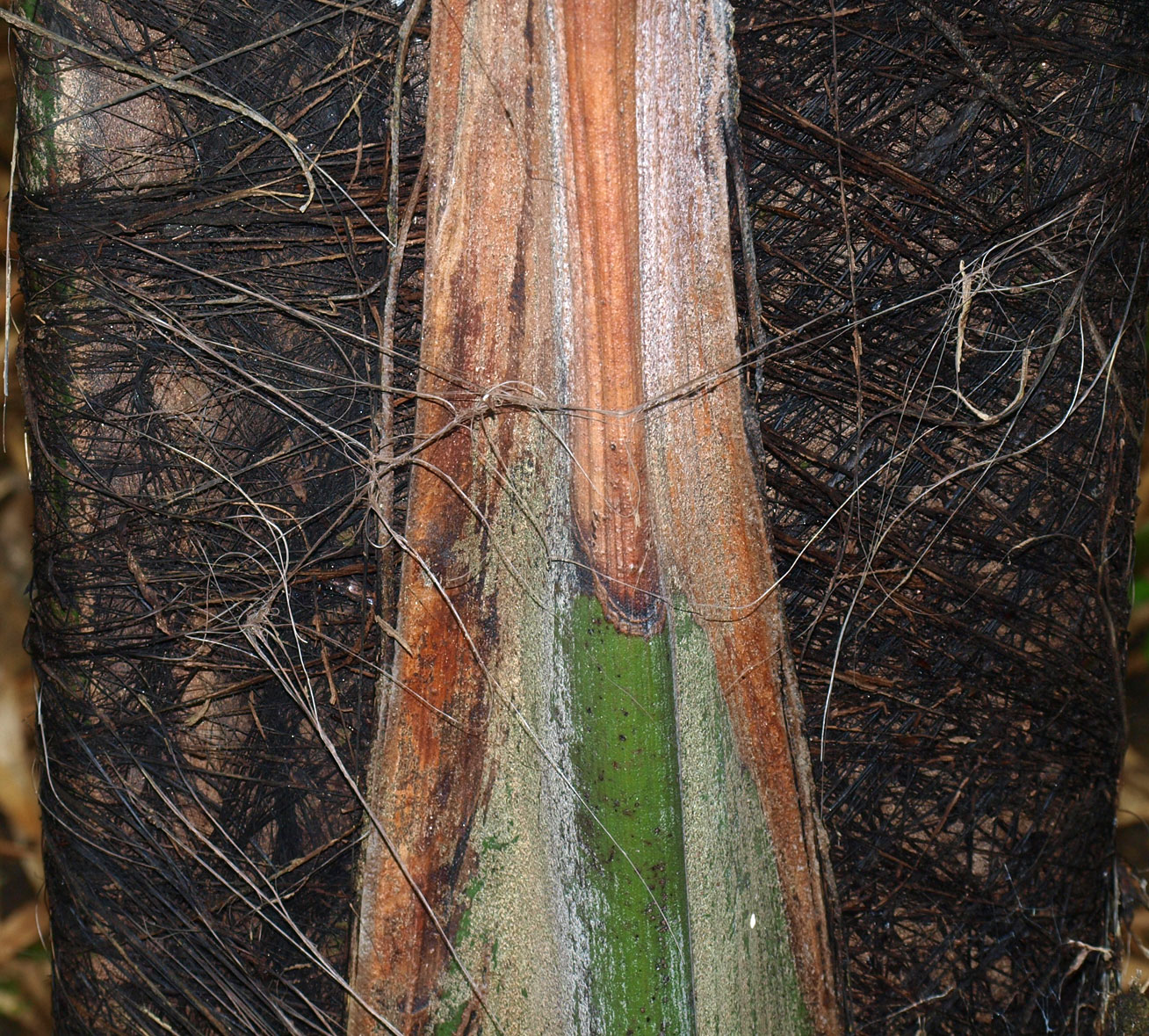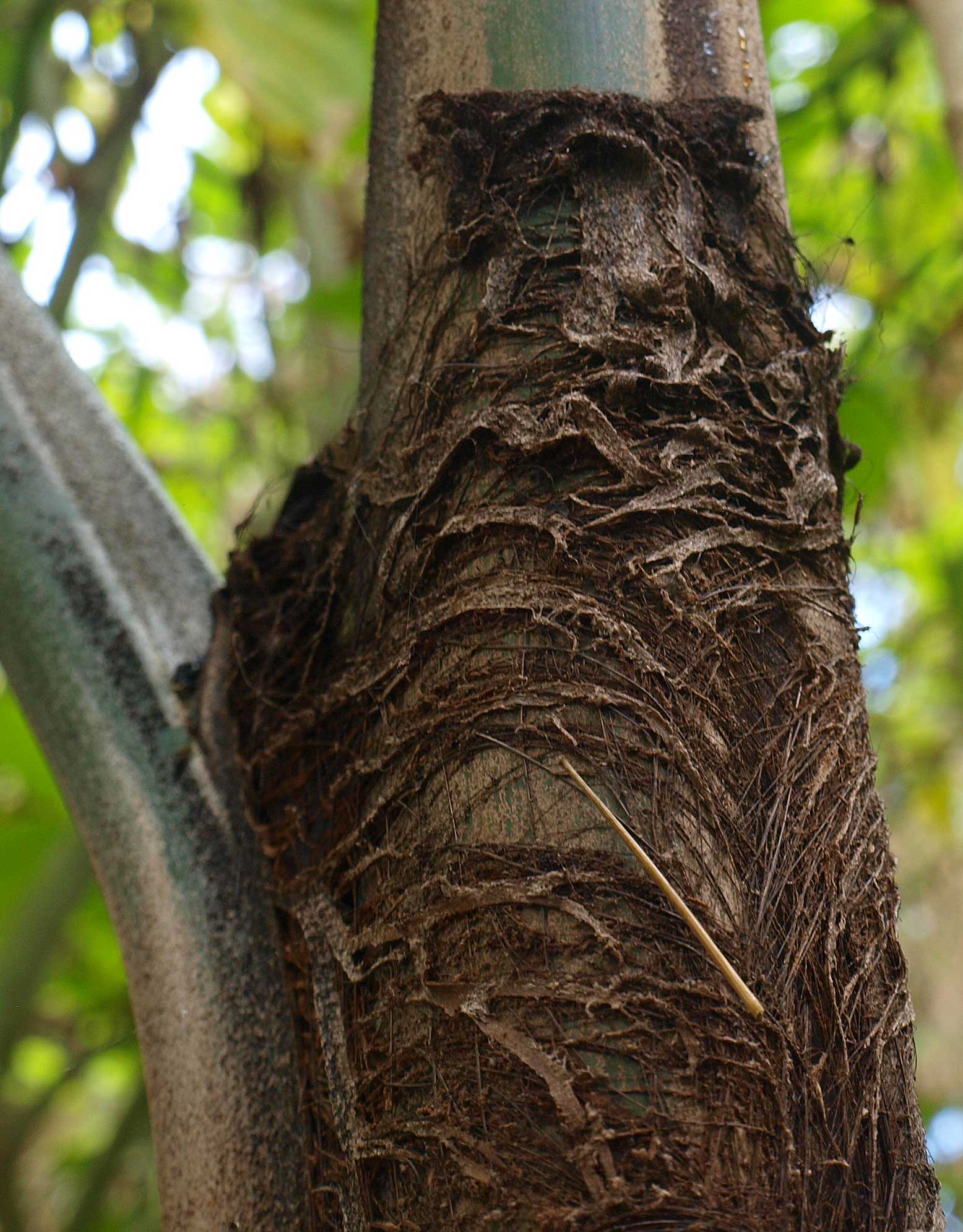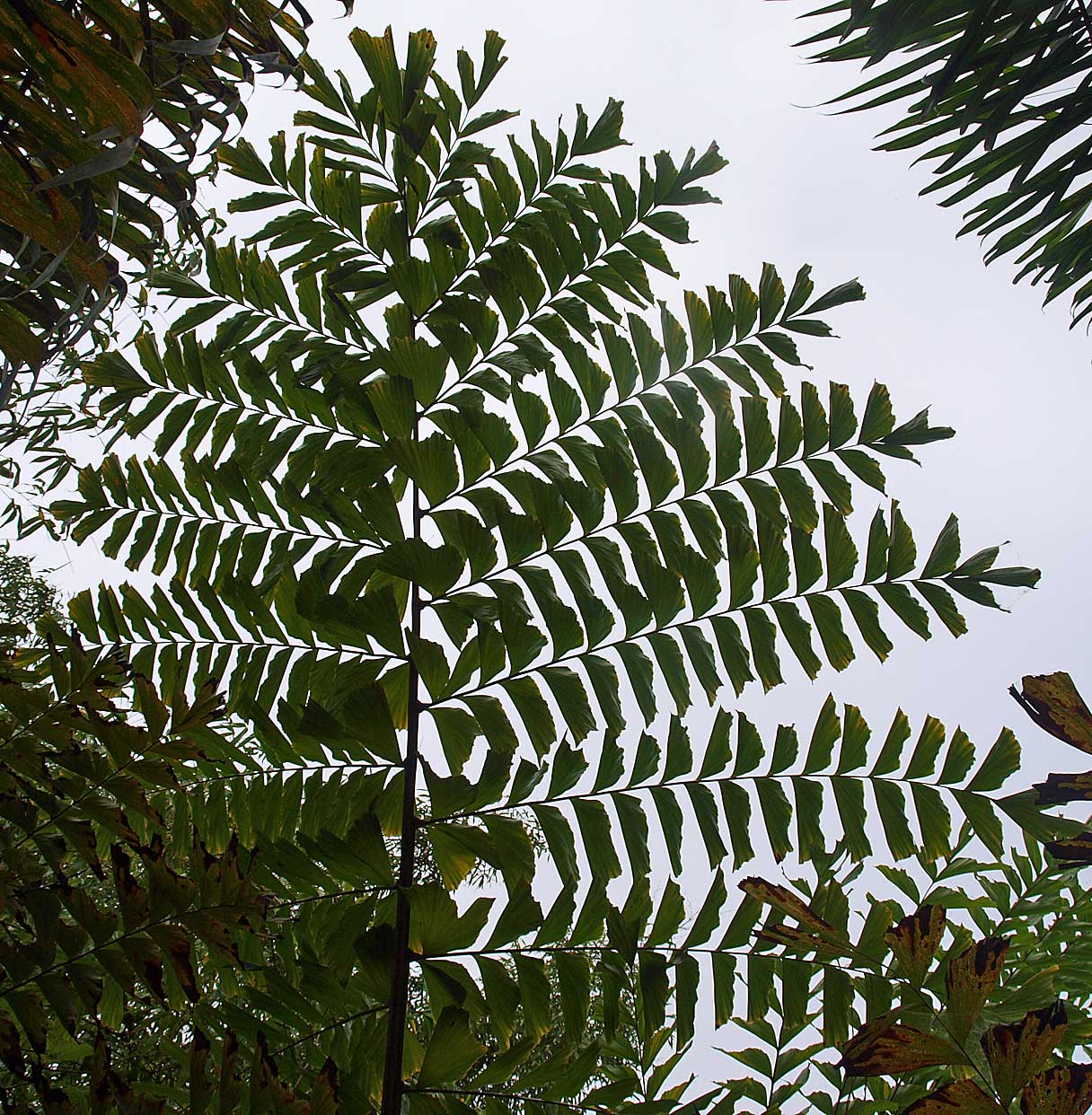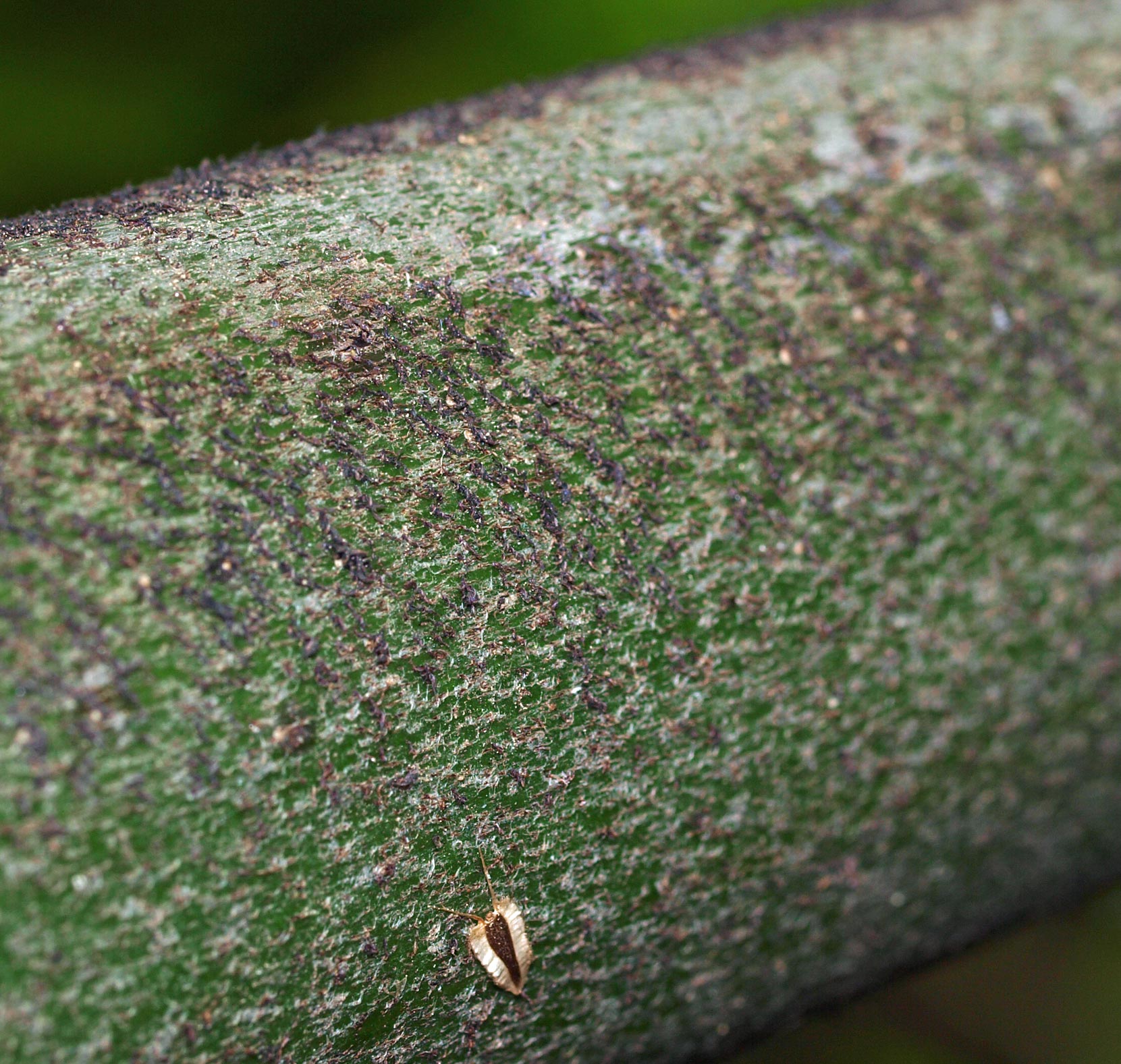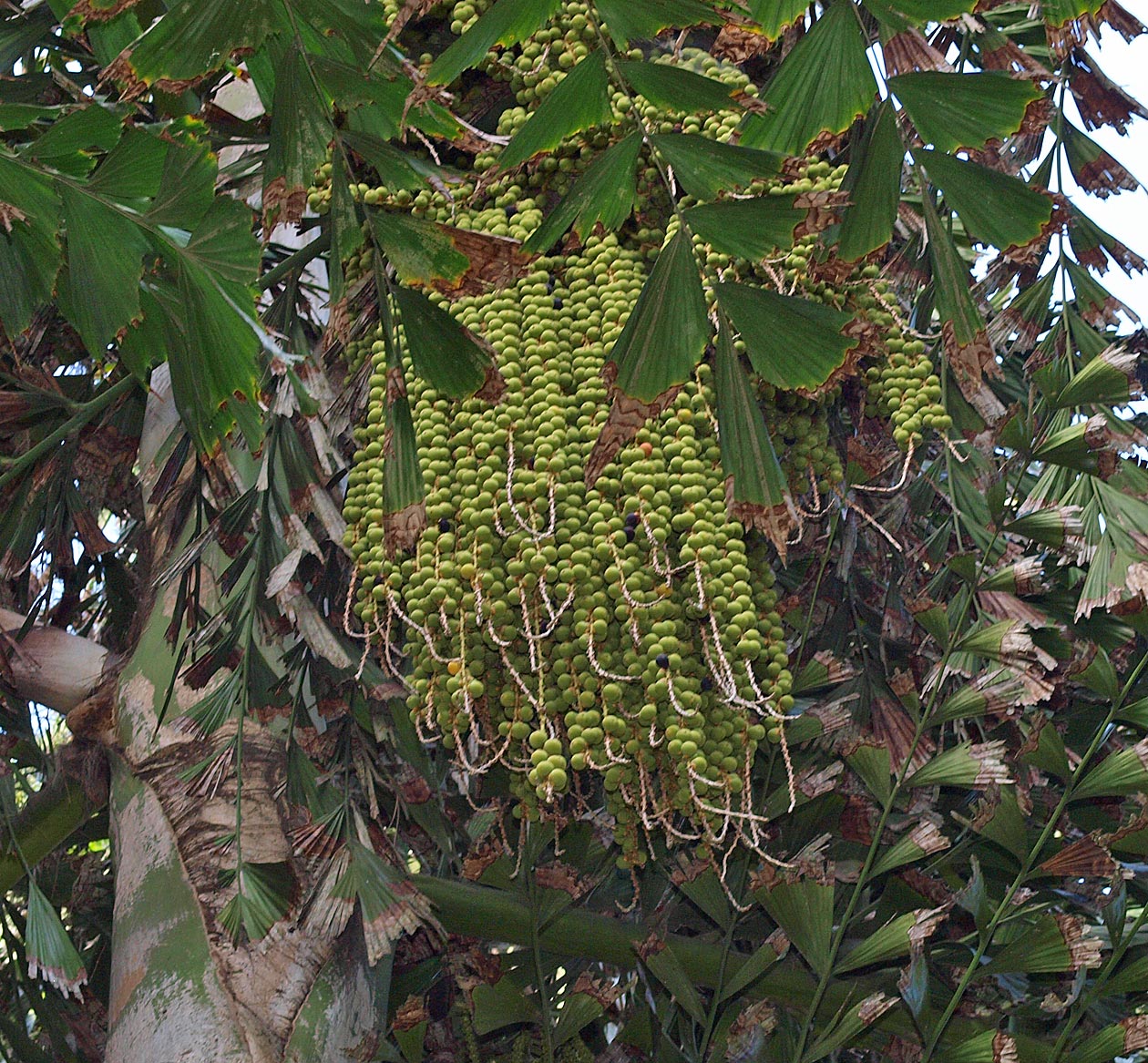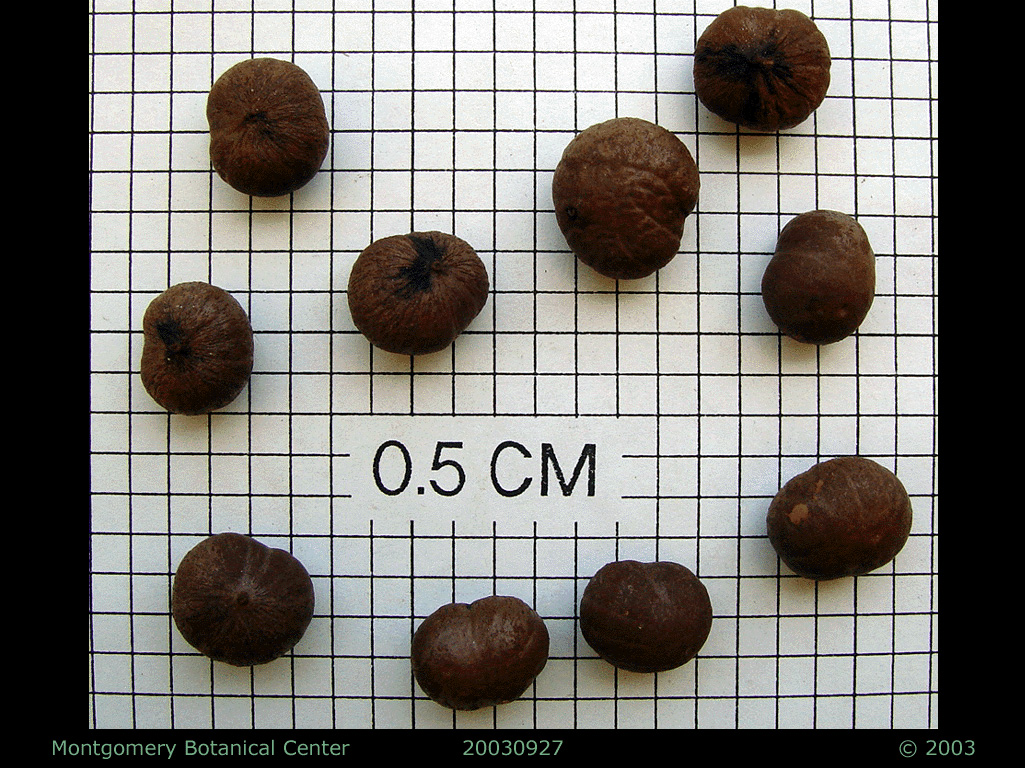Caryota maxima
|
Caryota maxima palms in landscape |
|
Caryota maxima leaf scar rings and falling leaf sheaths |
|
Caryota maxima fibers at base of leaf |
|
Caryota maxima fibers and tomentum at base of leaf |
|
Caryota maxima bi-pinnate leaflets |
|
Caryota maxima tomentum on rachis |
|
Caryota maxima unripe fruit |
|
Caryota maxima seeds (MBC photo: 030927-1). Photograph courtesy of Montgomery Botanical Center http://www.montgomerybotanical.org/ |
Common name
giant mountain fishtailfishtail:
leaflet shape of some palms appearing like a fish tail, or as if a bite has been taken out of the leaflet, eg. <em>Caryota</em> (see praemorse)
palm
Description
Stem: Solitary, upright, to 30-35 m tall and 30 cm in diameter, older palms ringed with slender, widely-spaced leafleaf:
in palms -- the leaf blade (which is usually divided into leaflets or leaf segments), the petiole (or leaf stalk) and the sheath (which forms the attachment of the leaf to the stem)
scars Leaves: Bipinnate, induplicateinduplicate:
Most palm leaflets or leaf segments are obviously folded. If the folds create a V-shape, with the midrib lower than the margins (so that rain might fall "into a valley"), the folding is induplicate.
, to 7 m long, with dull green, pendulous leaflets growing in one plane. The leaflets are obdeltoid and praemorsepraemorse:
with a jagged edge or like a fish tail
. Flowers and fruit: Inflorescences are massive, 1-1.5 m long with many pendant branches with staminatestaminate:
a flower bearing stamens but no pistils; a “male” flower
flowers and pistillatepistillate:
a flower bearing a pistil but no stamens; a “female” flower
flowers on the same inflorescenceinflorescence:
the reproductive structure of a flowering plant, including palms, consisting of flowers and associated bracts
. Fruits are up to 2.5 cm long and pink to dark reddish-purple when ripe.
Diagnostic features
Solitary palms with bipinnatebipinnate:
doubly pinnate
, praemorsepraemorse:
with a jagged edge or like a fish tail
leaflets
May be confused with
Caryota mitis, but C. mitis is a clustering, multi-stem palm.
Distribution
Native to southern China through Southeast Asia to Java
Additional comments
Extreme care is required when handling the fruits, in which calcium oxylate crystals are found.
The large, pendulous inflorescences of this palm appear on a mature palm at each node (leaf scar ring), ripening from the highest to the lowest. Then the palm dies.
Scientific name
Caryota maxima Blume
Family
Arecaceae/Palmae
Synonyms
Caryota aequatorialis Ridl.
Caryota obtusa, var. aequatorialis Becc



